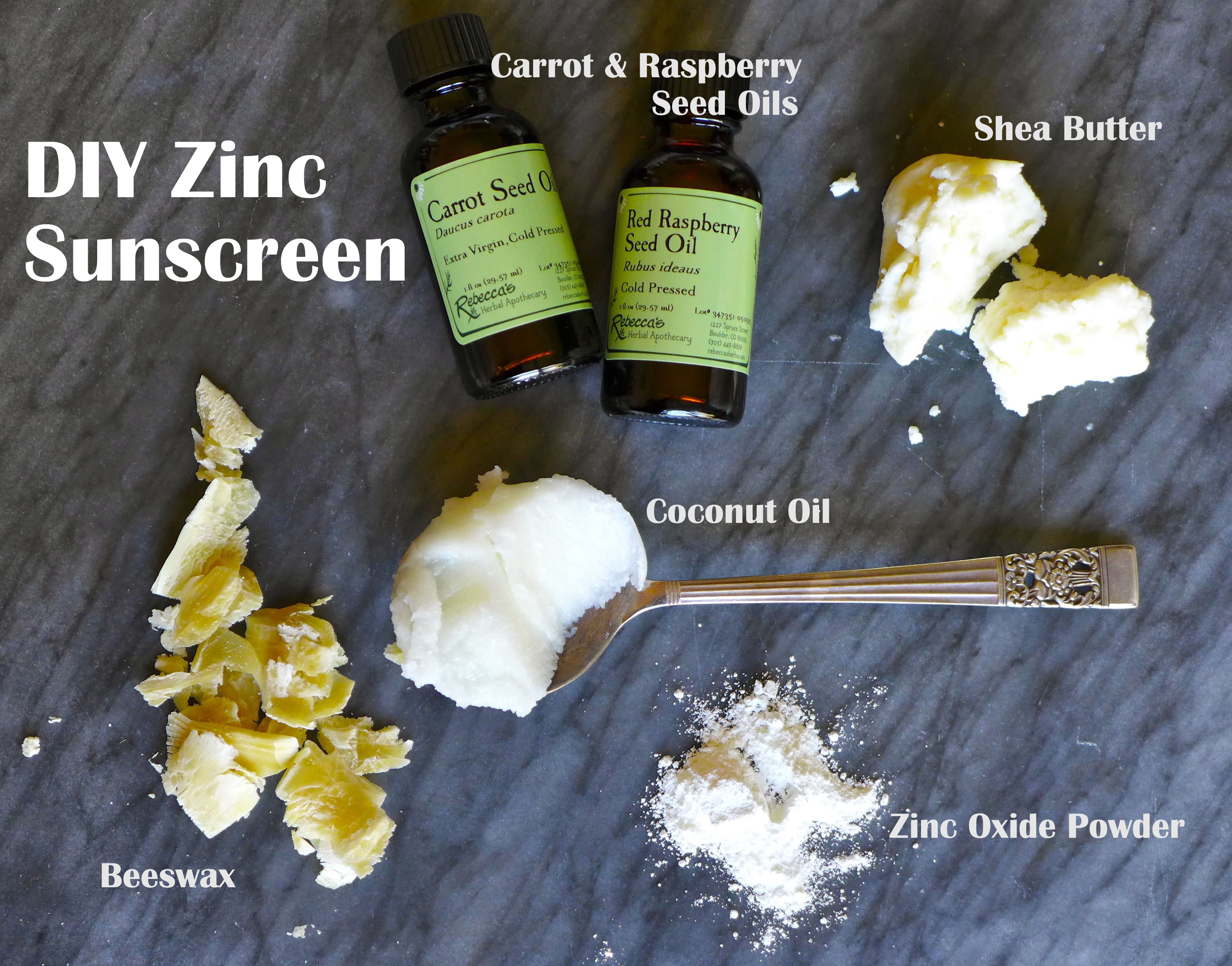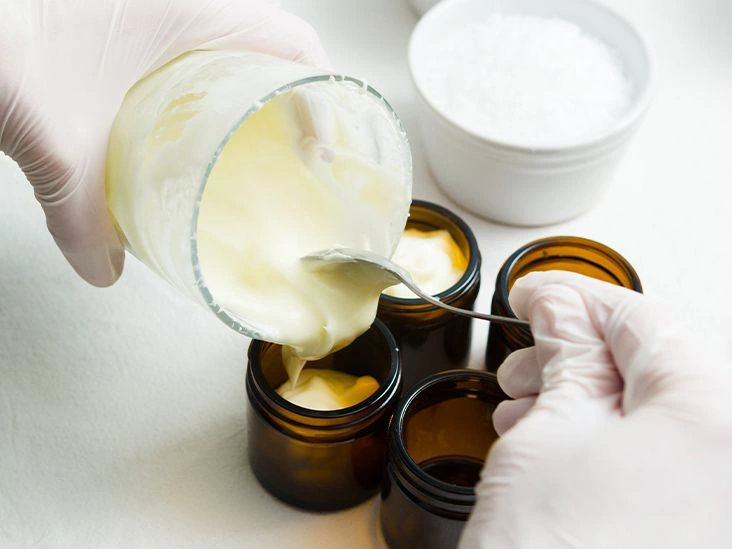Sunscreen is a topical health product designed to shield your skin from the sun’s ultraviolet (UV) radiation. About one in five Americans will face a skin cancer diagnosis during their life, according to the American Academy of Dermatology.
Sunscreen is one preventative measure you can use to reduce the harmful effects of too much sun exposure.
For reasons like expense, convenience, or concerns about certain ingredients, you might consider crafting your own sunscreen from scratch.
Before you grab mason jars and aloe vera, it’s important to recognize how challenging it is to produce an effective homemade sunscreen — and how vital it is that your sunscreen actually works.
We’ll debunk common myths about DIY sunscreens and share recipes for homemade formulations that have the potential to offer protection.
What makes a sunscreen work well?
Sunscreen labels can feel like they require a glossary. To understand what makes a sunscreen effective, let’s clarify some common terms used to describe these products.
SPF rating
SPF means “sun protection factor.” It’s a numerical indicator of how much protection a product provides against ultraviolet B (UVB) rays, which is why a number represents SPF.
The American Academy of Dermatologists suggests using an SPF of at least 30.
Broad spectrum
Broad-spectrum sunscreens guard your skin against both UVB and ultraviolet A (UVA) rays.
While UVB rays are more directly tied to skin cancer, UVA rays can also harm skin and penetrate deeper layers, speeding up the development of wrinkles. That’s why broad-spectrum protection is preferable.
Sunblock
Sunblock refers to products that protect by forming a barrier on the skin’s surface rather than being absorbed. Many sun protection formulations combine sunblock and sunscreen ingredients.
Chemical UV filters
In the United States, sunscreens are regulated as over-the-counter drugs by the Food and Drug Administration (FDA). This means most active ingredients must be evaluated for safety and effectiveness before being marketed.
Still, certain sunscreen components have drawn concern in recent years for potentially contributing to skin damage and even raising cancer-related worries. Ingredients such as oxybenzone, retinyl palmitate, and parabens are among those that consumers question; see more information here.
Natural sunscreens
Natural sunscreens generally describe formulations that don’t rely on chemical UV filters.
They typically avoid parabens and ingredients like oxybenzone, avobenzone, octisalate, octocrylene, homosalate, and octinoxate.
Most natural options use mineral actives that sit on the skin and reflect UV rays—commonly titanium dioxide or zinc oxide—rather than synthetic chemicals.
Effective products block both UVA and UVB
With definitions clarified, it’s easier to see what makes a sunscreen effective.
Good sunscreens or sunblocks either reflect or scatter both UVA and UVB radiation so those rays can’t penetrate your skin.
Once rays are scattered, the organic components in sunscreen formulas absorb the remaining energy and dissipate it as heat across the skin’s surface.
However, homemade sunscreens using plant oils like red raspberry seed oil may offer some protection but usually lack a strong UV filter.
Without an established filter such as titanium dioxide, zinc oxide, or a proven chemical agent to scatter or reflect UV radiation, a DIY sunscreen won’t reliably protect your skin.
That’s one reason the FDA recently updated sunscreen guidance: to be commonly recognized as safe and effective (GRASE), sunscreen products generally need to include titanium dioxide or zinc oxide.
DIY sunscreen formulas
There are many homemade sunscreen recipes online, but only a small number are likely to offer meaningful protection from harmful UVA and UVB rays.
We looked for DIY approaches that seem most promising and compiled a few recipes below.
Homemade sunscreen with aloe vera and coconut oil
Aloe vera is a useful ingredient in homemade sun-care remedies. It’s been shown to both treat and help prevent skin burns.

Note: This formulation isn’t water-resistant and requires frequent reapplication.
Ingredients
- 1/4 cup coconut oil (reported SPF ~7)
- 2 or more tbsp powdered zinc oxide
- 1/4 cup pure aloe vera gel
- 25 drops walnut extract oil for fragrance
- 1 cup (or less) shea butter for spreadable texture
Instructions
- Place all ingredients except the zinc oxide and aloe vera gel in a medium saucepan. Heat over medium until the shea butter and oils melt together.
- Allow the mixture to cool slightly before stirring in the aloe vera gel.
- Let cool fully before folding in the zinc oxide. Mix thoroughly so the zinc oxide is evenly dispersed. You can add beeswax or another wax for a firmer consistency.
Store in a glass container and keep in a cool, dry location until needed.
Find these ingredients online: zinc oxide powder, aloe vera gel, coconut oil, shea butter, beeswax, small glass jars.
Homemade sunscreen spray
To make a sprayable version, prepare the same mixture as above but omit the shea butter.
Once fully cooled, add extra aloe vera gel and a carrier oil like almond oil — which has mild SPF qualities — until the blend becomes sprayable. Keep it in a glass spray bottle and refrigerate for best freshness.
Find almond oil and a glass spray bottle online.
Homemade sunscreen for oily skin
If your skin tends to be oily, you may be reluctant to use an oil-rich DIY sunscreen. Some carrier oils and essential oils can help balance sebum production, though.
For less greasy results, follow the recipe above but replace coconut oil — which can be comedogenic — with a lighter carrier like jojoba oil or sweet almond oil.
Find jojoba oil online.
Homemade “waterproof” sunscreen
Some DIY guides claim to produce waterproof sunscreens, but there’s little scientific support for that when using homemade ingredients.
The additives that give commercial sunscreens water resistance are typically the same processed compounds DIYers try to avoid.
Those components enable skin absorption of the product’s protective elements and are manufactured in controlled lab settings.
Why sunscreen matters
It’s reasonable to worry about certain ingredients in many mass-market sunscreens, but that doesn’t mean you should avoid sunscreen altogether.
There’s evidence that sunscreen lowers the likelihood of sunburn, which in turn reduces the risk of lesions that can develop into melanoma.
Remember, sunscreen has limits. Even water-resistant formulas should be reapplied roughly every two hours for optimal protection.
Sitting in shade, wearing sun-protective clothing and a wide-brimmed hat, and minimizing total sun exposure are important parts of a comprehensive sun-safety strategy.
Bottom line
The reality is there’s limited evidence supporting the effectiveness of homemade sunscreens.
Without formal training in chemistry or pharmaceuticals, it’s tough to determine the correct amount of zinc oxide or titanium dioxide needed for reliable protection.
Teams of chemists spend years refining sunscreen formulas so regulators consider them safe and effective. The odds of creating a DIY sunscreen that matches commercial products are low.
The good news: you don’t have to accept problematic ingredients simply because you can’t make sunscreen at home.
Many sunscreens avoid ingredients like oxybenzone, which has been linked to hormonal disruption and coral reef damage.
Newer natural sunscreen products arrive each year, and the FDA has acted on concerns about potentially harmful ingredients by updating guidance.
With informed shoppers and demand for cleaner alternatives, better sunscreen choices should continue to appear on store shelves.
In the meantime, look for the best sunscreen you’re comfortable using — whether that’s a DIY option, a more natural commercial product, or a dermatologist-recommended brand.


















Leave a Reply
You must be logged in to post a comment.